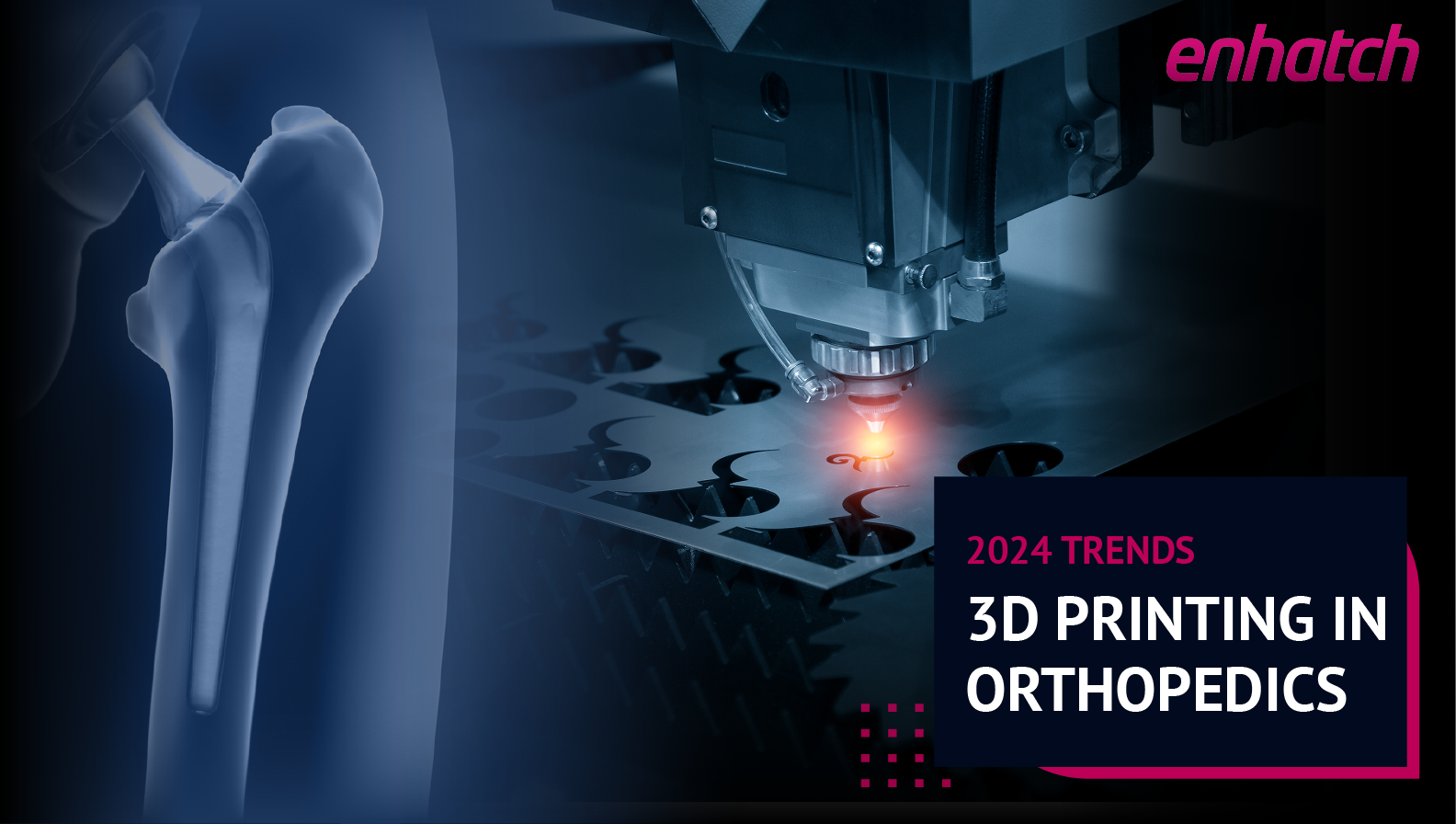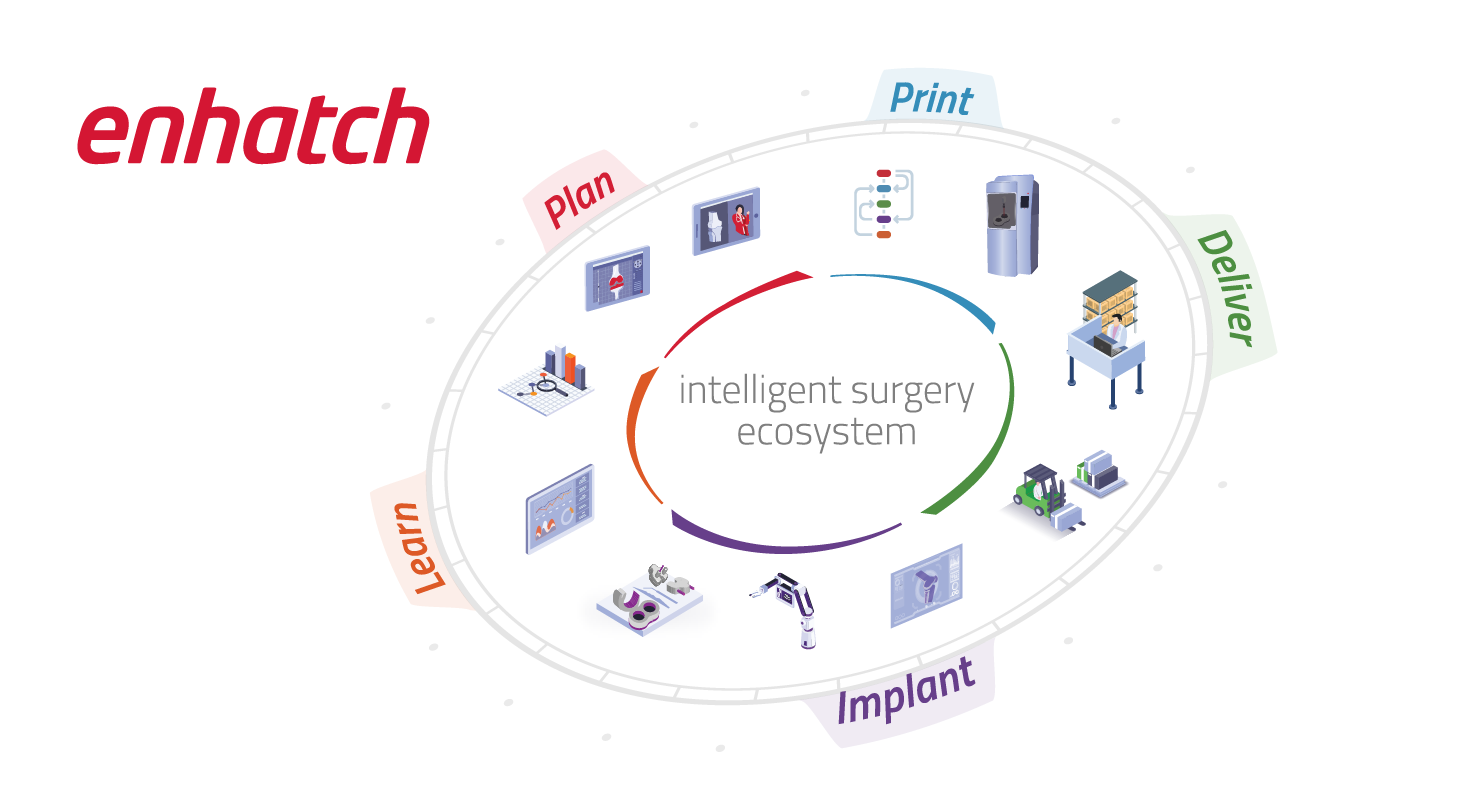Achieving the Promise of Point-of-Care Solutions in Orthopedics

In recent years, the field of orthopedics in the United States has witnessed a remarkable surge in the adoption and development of point-of-care (POC) solutions. 3D printing technology has been one of the key catalysts for this increased adoption.
Point-of-care 3D printing allows for the creation of customized implants, surgical guides, and 3D anatomical models directly at the point of care. For example, when it comes to oncology, hospitals often use POC 3D-printed anatomical models. The anatomical models are largely used for presurgical planning and sometimes for intraoperative reference. Studies have shown that 3D anatomical models can help to:
- Enhance tumor localization.
- Decrease operating room time and cost.
- Increase surgeons' confidence.
- Improve patient outcomes.
With point-of-care manufacturing, hospitals can reduce the lead times getting these models to surgeons. It is no wonder that we are tending to see the increased adoption of POC 3D printing at hospitals in the United States.
The number of hospitals adopting centralized 3D printing for point-of-care manufacturing increased from 3 in 2010 to close to 400 in 2022.
The growth of POC 3D printing in orthopedics is fueled by its ability to enhance surgical precision, reduce costs, increase accessibility, and improve supply chain resilience.
Factors driving point-of-care 3D printing adoption
The trend of increasing adoption of POC 3D printing is due to the immense benefits it provides hospitals.
Reduce costs
One primary advantage of adopting point-of-care 3D printing is its potential to significantly reduce costs and improve efficiencies.
-
Seven studies investigating the application of 3D-printed anatomical models in orthopedics and maxillofacial surgical procedures have shown an average time saving of 62 minutes per case. This translates to $3,720 per case savings from reduced operating room time.
- Similarly, 25 studies using 3D-printed surgical guides have demonstrated an average time savings of 23 minutes per case. This results in $1,488 per case savings from reduced procedure duration.

These findings suggest that hospitals integrating personalized solutions can significantly reduce costs and increase efficiencies. Increasing adoption and the ability to get these solutions into surgeons' hands faster could bring huge benefits to hospitals. Point-of-care 3D printing is one way for hospitals to achieve these objectives.
The cost savings achieved by scaling personalized solutions can be easily used to offset any initial expenses incurred for setup.
Increased accessibility
Traditionally, the fabrication of patient-specific solutions involves long lead times and iterations with medical device manufacturers. This could lead to prolonged wait times, high costs, and reduced efficiency.
However, with POC 3D printing, hospitals can quickly realize the benefits of patient-specific solutions by:
- Producing 3D anatomical models, surgical guides, and patient-specific implants directly onsite.
- Ensuring quicker turnaround times and getting products in the hands of surgeons faster.
- Streamlining the production process.
- Reducing costs associated with transportation.
- Improving patient access to personalized solutions.
Enhance surgical precision
Point-of-care solutions in orthopedics, particularly 3D anatomical models and patient-specific guides could greatly enhance surgical precision. 3D anatomical models provide detailed insights into the patient's anatomy before surgery. Surgeons use 3D models to visualize complex anatomical features and plan surgeries accordingly.
Patient-specific guides, derived from 3D anatomical models, assist in precise implant positioning during surgery. By integrating these tools, hospitals can potentially improve surgical accuracy and patient outcomes.
With point-of-care 3D printing, hospitals can ensure that these technologies get into surgeons' hands faster. This could potentially enable better preoperative planning and improve patient outcomes.
Increases supply chain resilience
Point-of-care 3D printing can help reduce supply chain disruptions in healthcare. By 3D printing on-site, hospitals can:
- Minimize delays caused by transportation issues or global crises.
- Respond more rapidly to emergencies.
- Ensure continuity of care and reduce treatment delays for patients.
Challenges in implementing point-of-care 3D printing
While POC 3D printing offers significant benefits, hospitals can face some challenges in implementation.
Manufacturing know-how gap at hospitals
Hospitals often encounter challenges in setting up point-of-care manufacturing. One key challenge is the lack of infrastructure required for manufacturing within their premises. Unlike traditional manufacturing environments, hospitals primarily focus on patient care rather than manufacturing products.
Thus, adapting to the requirements of POC 3D printing involves establishing new infrastructure, which can be daunting. Moreover, integrating manufacturing processes into a hospital's existing framework requires careful planning. Intricate planning is necessary to minimize disruptions to ongoing medical services and ensure compliance with healthcare regulations.
Quality and regulatory learning curve
Adopting point-of-care manufacturing at hospitals can also be challenging because of the intricate knowledge required of quality and regulatory systems. Navigating this complex landscape (for example, understanding the US FDA regulations) adds another layer of complexity for hospitals.
Challenges in streamlining preoperative planning
Streamlining preoperative planning for point-of-care 3D printing at hospitals can be a challenge as:
- It requires collaboration between multiple stakeholders (surgeon, engineer, hospital staff, etc.)
- The ease of integration of point-of-care processes into existing hospital workflows can be complex.
- At scale, complete visibility into the status of every case is required.
Increasing the efficiency of preoperative planning is a critical requirement for hospitals to plan and scale patient-specific surgeries.
Point-of-care manufacturing: Overcoming adoption hurdles
Here I will outline some recommendations I think will be useful for hospitals looking to seamlessly integrate point-of-care 3D printing.
Select the right manufacturing partner for process implementation
Selecting the right partner for POC 3D printing is crucial for hospitals facing initial hurdles. A suitable partner can provide vital assistance in setting up manufacturing and will also have knowledge of the intricate quality and regulatory requirements. The right partner can help hospitals establish appropriate workflows, build required quality management systems (QMS), and ensure traceability with appropriate documentation for device manufacturing.
3D Systems, for instance, has partnered with hospitals to streamline point-of-care 3D printing. Through this collaboration, hospitals gain access to advanced technology and expertise, helping ensure quality and compliance standards are met. By teaming up with trusted partners like 3D Systems, hospitals can effectively tackle challenges in implementing point-of-care 3D printing, ultimately reducing costs and improving patient care.
Implement a scalable preoperative planning solution
Selecting the correct preoperative planning software is essential for successful point-of-care 3D printing. Streamlining the preoperative planning process is critical for scaling this model. When evaluating preoperative planning solutions, below are some points that hospitals need to consider from a software perspective:
- Intuitive interfaces and advanced features to simplify surgical planning.
- Ease of building custom workflows across multiple product lines.
- Collaboration efficiency among various stakeholders.
- AI integration to more efficiently segment and generate 3D anatomical models.
- Ability to generate 3D models from X-rays in addition to CTs.
- Ease of tracking case status and approvals.
- Role-based access setup for key stakeholders.
The right preoperative planning solution can help hospitals streamline planning and boost accuracy. This is crucial for scaling patient-specific surgeries.
Staff education and training
Continual staff education is vital for point-of-care manufacturing's success. It ensures staff remain current with technology, practices, and regulations. Ongoing education fosters innovation and adaptability, empowering staff to maximize POC manufacturing for personalized patient care.
In summary, point-of-care 3D printing holds great promise for orthopedics, reducing costs, and offering personalized care and precise surgeries. Though there are challenges in adopting this technology, they can be overcome. With the right partnerships, ongoing training, and a focus on innovation, healthcare providers can make the most of onsite 3D printing. The future of orthopedics looks brighter with point-of-care 3D printing leading the way toward better healthcare.
Sources
- "3D Printing in a hospital: Centralized clinical implementation and applications for comprehensive care", retrieved from the NIH website. Visit page.
- "Establishing 3D Printing at the Point of Care: Basic Principles and Tools for Success", retrieved from the Radiological Society of America (RSNA) website. Visit page.
- "Medical 3D Printing Cost-Savings in Orthopedic and Maxillofacial Surgery: Cost Analysis of Operating Room Time Saved with 3D Printed Anatomic Models and Surgical Guides", retrieved from the Pubmed/NIH Website. Visit page.



